Creating NFT Art: A Complete Guide for Artists
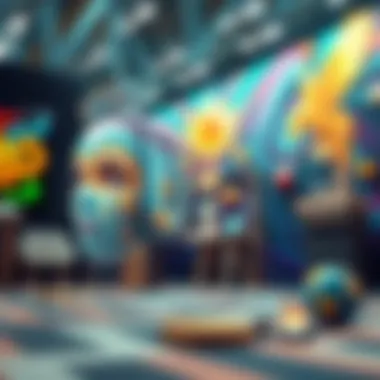
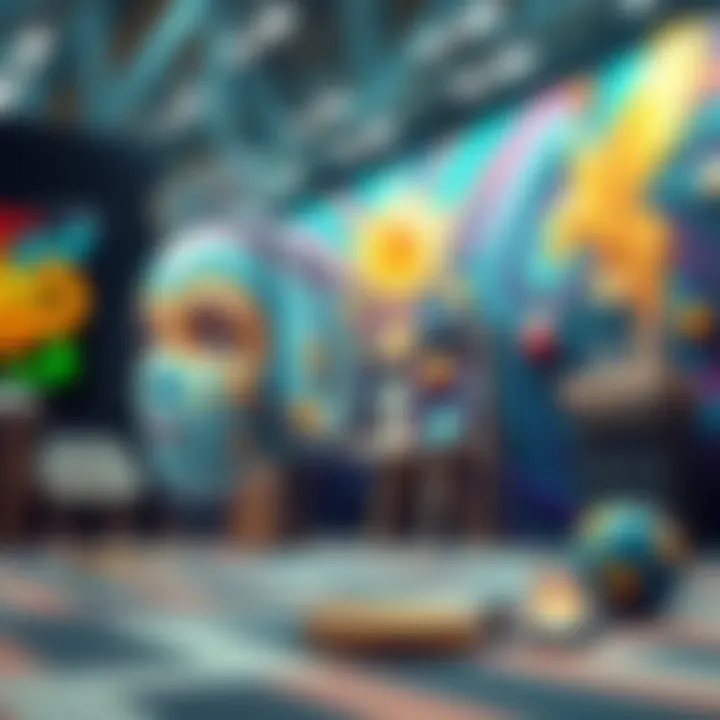
Intro
The world of digital art has undergone a radical transformation with the advent of NFTs—non-fungible tokens. Artists are no longer confined to traditional mediums or galleries; instead, they can now reach global audiences through digital platforms. Crafting NFT art is not merely about creating visuals; it involves understanding the underlying technologies and navigating a complex marketplace.
In this guide, we will dissect the steps essential for creating and selling NFT art. From grasping the concept of digital asset ownership to the crucial tools artists need to mint their creations, every facet will be covered. This exploration is not just for artists but also for investors and crypto enthusiasts keen to grasp the intricacies of this ever-evolving field.
As we dive deeper, the following sections will unfold the fundamental knowledge required to navigate the NFT landscape, providing both clarity and insight for those stepping into this domain.
Understanding NFT Art
Diving into the world of NFT art requires an understanding of its foundational elements. Non-fungible tokens, or NFTs, represent a new frontier in the intersection of art and technology. It’s crucial to grasp what these tokens entail, how they redefine ownership of digital assets, and how they leverage technological advancements to enhance artistic expression.
Defining NFTs
NFTs are unique digital assets verified using blockchain technology. Unlike cryptocurrencies such as Bitcoin or Ethereum that are interchangeable, each NFT is distinct and cannot be replaced on a one-to-one basis. Imagine a signed painting that has a unique signature on it — no other painting can truly replicate that signature. The same principle applies here. Each NFT contains a specific set of information that distinguishes it from every other token, making it impossible to interchange them as one would with a dollar bill.
To create an NFT, artists often use established platforms such as OpenSea or Rarible. By employing these systems, they can transform their artistic work, whether it’s a digital painting, a piece of music, or a short film, into a token that represents ownership and authenticity on a blockchain.
The Significance of Digital Ownership
The concept of ownership has evolved over time, and NFTs significantly alter how we view it in the digital realm. When someone purchases an NFT, they buy a verifiable deed of ownership that is securely recorded on the blockchain. This type of ownership offers several benefits:
- Authenticity Guarantee: Each NFT is verifiable, which assures buyers they are getting the original work, preventing counterfeits.
- Creator Royalties: Artists can set terms that allow them to earn royalties every time their work is resold, providing continuous income as their work appreciates in value.
- Broader Market Access: Artists can reach a global audience, breaking down traditional barriers bound by geography and gallery representation.
This new form of ownership isn't just a metaphorical shift; it's a tangible change that allows both artists and collectors to engage in more structured and financially viable relationships.
The Intersection of Art and Technology
As NFTs bridge the gap between art and technology, they pave the way for innovative forms of creativity. This intersection enables artists to experiment with new digital mediums, reimagining traditional practices in unexpected ways. For example, digital animations or interactive pieces can be rendered as NFTs, hugging the line between static art and immersive experiences.
Consider instances where artists like Beeple sold their digital artwork for millions. These transactions weren’t merely about owning an image; they encompassed the entire experience of the artwork, often enhanced through technology.
Additional factors to consider include:
- Tokenization: This process allows artworks to be fractionally owned, democratizing access for collectors who wouldn’t typically invest in high-value pieces.
- Virtual Galleries: Artists and collectors can showcase NFTs in virtual reality spaces, providing an evolving platform for art displays.
- Collaboration with Developers: Artists now often collaborate with tech developers to create unique experiences, like gamification or augmented reality.
In summary, understanding NFT art involves grasping the principles of digital ownership and technological integration that underscore its creation and sale. As artists navigate this new landscape, having clarity on these elements will not only empower their personal practice but also position them effectively within the wider NFT marketplace.
Essential Tools for Creating NFT Art
In the fast-evolving world of NFT art, having the right tools is akin to a painter choosing high-quality brushes. Tools can make or break an artist’s vision. Whether you are an emerging artist or a seasoned creator looking to translate your work into the digital realm, understanding the essential tools of the trade is crucial. This section will delve into software solutions, hardware necessities, and platforms that facilitate the creative journey in this digital age.
Software Options for Artists
The software landscape for digital art creation is vast. From illustration to animation, artists have a buffet of choices tailored to their needs. Popular programs include Adobe Photoshop, a staple for many illustrators, and Corel Painter, which offers a more traditional painting experience digitally. Artists often gravitate towards Procreate, especially on the iPad, due to its intuitive interface and portable nature.
For animators, Blender is an invaluable asset. It’s open-source, which means it’s accessible without spending a dime yet packs a punch with its features.
More specialized software might also catch one's interest; tools like Aseprite for pixel art or Vectr for vector graphics can cater to specific artistic styles. Choosing software not only affirms an artist’s personal style but also their workflow efficiency. The choice can vary based on familiarity and the kind of art being created. Software also influences the final output, so it’s wise to pick one that complements your artistic intent.
Hardware Requirements
Hardware plays a significant role in the creation of NFT art. An artist's hardware setup can directly impact the quality of the work produced. At the very least, a reliable computer is essential—be it a laptop or a desktop. For artists who utilize graphics-intensive programs, investing in a powerful graphics card and ample RAM is beneficial; this ensures smooth operations during demanding tasks.
Many digital artists opt for tablets as their primary tool. The Wacom Cintiq series is widely lauded for mimicking that authentic pen-on-paper feel, providing a seamless drawing experience. If you're more budget-conscious, alternatives like the Huion tablets also offer solid features at a more accessible price point.
Using a stylus alongside your tablet can also enhance the precision of artwork—many artists swear by the Apple Pencil when working on iPads. Having a dual-monitor setup can further streamline the process, allowing for multitasking—one screen for the art and the other for references, tutorials, or the minting process.
Platforms for Artwork Creation
When it comes to platforms, artists are not without options. Web-based applications like Canva or Figma offer collaborative spaces where creators can easily mock up designs or brainstorm concepts with others. They can be particularly useful for social media graphics intended to promote NFT art.
For those diving into more complex projects, platforms like Artbreeder allow the mixing and matching of different images, giving artists a new avenue for creativity. It introduces generative art, where algorithms cultivate unique artworks based on user input.
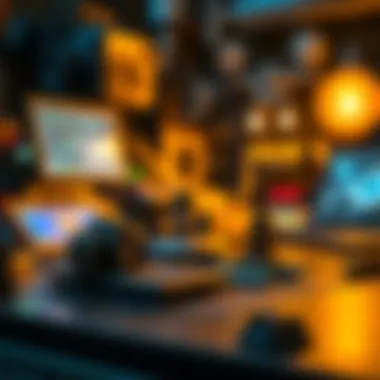
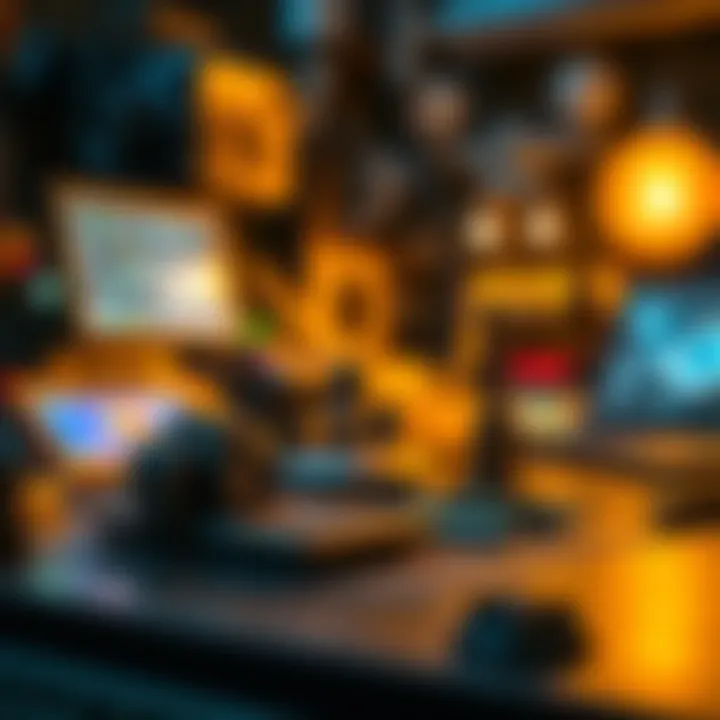
However, artists should not overlook the importance of NFT marketplaces like OpenSea or Rarible. These platforms not only aid in the minting process but also provide visibility to potential buyers, making them integral to an artist's workflow. The ease of use these platforms offer allows artists to focus on their creative process instead of getting bogged down by tech issues.
"The right tools can empower the artist's vision, transforming ideas into vibrant reality."
In summary, having a good grip on essential tools—software, hardware, and platforms—will not only ease the artistic journey but also elevate the quality of the NFT art produced. As technology advances, staying updated with these tools becomes even more vital to harnessing the full potential of creativity in the digital sphere.
The Creative Process Behind NFT Art
The journey of creating NFT art is unlike anything seen within traditional art realms. When it comes to forging a unique digital asset, the creative process plays a crucial role. It’s not just about slapping a few pixels together; it’s about weaving together multiple threads—imagination, technical prowess, and an understanding of the digital marketplace. This creative endeavor adds depth and meaning to the art that resonates with potential buyers.
Inspiration and Concept Development
Every masterpiece starts with an idea. The initial spark of inspiration can strike from everyday life, personal experiences, or even the global events shaping our world. A talented artist knows that drawing from personal passion often makes the most authentic art. Take for instance a digital artist inspired by a cityscape. They might create a stunning representation of their hometown's skyline, imbued with emotional resonance.
- Observation: Look around you, see the little moments that pull at your heartstrings.
- Curation: Gather thoughts and feelings to relay through art.
- Trend-spotting: Keep an eye on current events or cultural shifts. These can spark innovative ideas.
The concept development stage is equally important. One must refine their ideas—what story do they want to tell? What emotions should the artwork evoke? The clarity of vision will help to guide the artists as they move into the next phases. Whether painting digitally using a software like Procreate or making 3D models through Blender, inspiration lays the groundwork for this complex process.
Medium and Style Choices
In deciding the medium and style for NFT art, artists have a myriad of options. From pixelated art to high-resolution 3D graphics, the choice shapes not just the artwork itself but also how it fits into the NFT ecosystem. Artists must consider:
- Artistic Medium: Options are as varied as digital painting, 3D modeling, animation, or even generative art. Each medium has its strengths, dictates the tools used, and influences the final output.
- Art Style: Whether one prefers realism, abstract, or a blend of both can shape the audience that resonates with the work. For instance, a comic book style might appeal more to younger audiences, while minimalist designs often attract sophisticated collectors.
Choosing the right combination of medium and style is pivotal. It not only enhances the visual appeal but also the thematic depth of the piece. What's more, blending styles thoughtfully can lead to breakthrough creations, setting an artist apart in a saturated market. It’s all about striking the right chords that align personal reflection with broader art currents.
Creating Digital Artwork
Once inspiration is gathered and style established, the actual creation process begins. This step involves not just artistic skills but also the technical acumen required to translate vision into reality.
- Sketching: Many artists begin with rough sketches, mapping out basic forms and layouts. It’s like drafting a blueprint for a house.
- Digital Tools: Software like Adobe Illustrator or CorelDRAW can be employed for 2D artwork, while Maya and ZBrush work well for 3D modeling. Knowing your tool inside out can streamline the creation process.
- Final Touches: Colors, shading, and textures breathe life into the artwork. This phase is crucial, as fine-tuning can often elevate a good piece to greatness.
Finally, it’s essential to export the artwork in a format suitable for NFT minting. Formats like PNG, GIF, or MP4 (for animations) are popular among many artists. Paying close attention to resolution and quality at this stage is fundamental, as they impact how the final product will be appreciated in the digital marketplace.
"Creating art is not just what you see, but what you make others see through your lens."
In summary, the creative process behind NFT art entails a harmonious blend of inspiration, thoughtful medium and style choices, and skilled execution. It’s a vibrant interplay that allows artists to carve out a unique niche in the digital landscape while crafting pieces that not only represent their vision but also resonate deeply with an evolving audience.
Minting Your NFT
Minting an NFT is the crux of turning your digital artwork into a tradable asset on the blockchain. It’s the process that allows artists to create unique digital tokens that signify ownership and authenticity. Understandably, it’s a vital milestone in the NFT journey, bridging creativity and technology. With NFTs gaining traction, knowing the nitty-gritty of the minting process isn’t just beneficial; it's essential.
Choosing the Right Blockchain
Selecting the right blockchain can feel akin to picking the perfect canvas; it’s crucial. You want a platform that aligns with your needs as an artist and the audience you’re trying to reach. Here are some options that often crop up in discussions:
- Ethereum: The big fish in the pond. Popular due to its extensive ecosystem and community.
- Binance Smart Chain: Gaining traction for its low fees and faster transactions, it can be a viable alternative if Ethereum gas fees make you sweat.
- Polygon: A layer-2 solution for Ethereum, known for being both speedier and cheaper.
- Tezos: Consider it the eco-friendly option, with significantly lower energy consumption.
Each platform comes with its pros and cons, so it’s prudent to evaluate them not just on fees but also on community support and ease of use. An artist’s choice of blockchain will influence the visibility and marketability of the NFTs created.
Steps to Mint Your NFT
Minting an NFT involves several crucial steps. Following them can ensure your artwork is appropriately represented on the blockchain:
- Create a Digital Wallet: Much like having a bank account for your finances, a digital wallet holds your cryptocurrencies and NFTs. Options like MetaMask or Coinbase Wallet are popular choices.
- Fund Your Wallet: You might need some crypto to cover transaction fees, which leads us to the next point.
- Choose Your Marketplace: Platforms like OpenSea, Rarible, or Foundation each have their unique features and processes for minting.
- Upload Your Artwork: This is the moment you’ve waited for. Choose the file format that best represents your art, be it an image, video, or 3D model.
- Fill in the Details: Title, description, and pricing are aspects you’ll need to define. Ensuring that your metadata is engaging can help attract potential buyers.
- Mint Your NFT: Click that button. This process will generate your NFT and store it on the blockchain.
After minting, it is good practice to double-check the listing. Sometimes, things can go awry, leaving your masterpiece hidden from potential buyers.
Understanding Gas Fees
Gas fees are the not-so-glamorous reality of the blockchain world. They represent the cost of executing transactions and can fluctuate significantly based on network congestion. It’s essential to grasp this if you want to dodge potential pitfalls. Here’s a breakdown to navigate this aspect:
- What Are Gas Fees?: They are payments made by users to compensate for the computing energy required to process transactions on the Ethereum network.
- Why They Fluctuate: Gas fees go up during peak usage, much like concert ticket prices when a hot act is in town. The more congested the network, the higher the fees.
- How to Minimize Fees: Timing can play a crucial role. Transactions made during off-peak hours can be cheaper. Platforms may also provide options to set a gas limit.

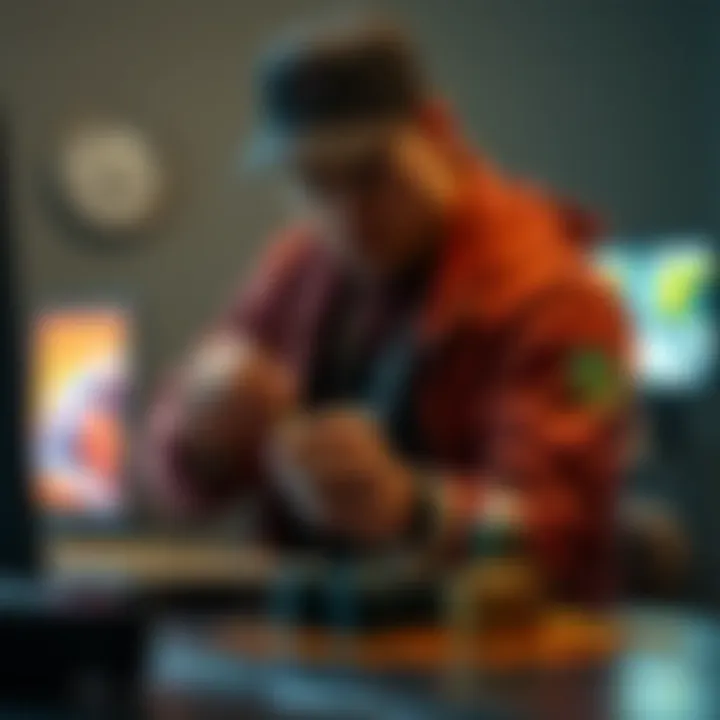
Economizing on gas is crucial for artists, as high fees can eat into potential profits, especially for newcomers entering the NFT space.
Navigating the minting phase is not just about clicking buttons; it requires thoughtful decisions that can affect the trajectory of an artist’s work in the NFT landscape.
Marketing Your NFT Art
Marketing your NFT art is vital in a landscape where thousands of creators compete for attention. Without a well-structured marketing strategy, even the most exceptional pieces of art can easily fade into obscurity. The digital realm is teeming with talented artists, yet standing out demands not just creativity but also savvy marketing tactics.
Art has always thrived on exposure. This rule holds doubly true for digital art, which can be easily shared but also quickly forgotten. By proactively marketing your NFTs, you don’t just sell art—you build a brand. Your identity as an artist becomes intertwined with your creations, imbuing each piece with a narrative that resonates with potential buyers. This connection between the artist and their audience can lead to a more sustainable income stream when approached thoughtfully.
Building an Online Presence
In today’s digital age, having a strong online presence is non-negotiable for artists. Building a website is one of the first steps to establishing your digital footprint. This platform should articulate your artistic journey, display your portfolio, and provide insights into your creative process. Consider including a blog where you share thoughts on art, current trends, and upcoming projects.
Moreover, optimizing the website for search engines is crucial. Employing keywords that resonate with NFT art, such as "digital ownership" or "crypto art," can enhance visibility, making it easier for potential buyers to find you. Tools like Google Analytics can provide insights into who visits your site, allowing for informed adjustments to your marketing approach.
Leveraging Social Media
Social media platforms are invaluable for marketing NFT art. They act as a gallery that can reach a global audience almost instantaneously. Instagram, for example, is especially well-suited for visual artists due to its image-centric focus. Use high-quality images of your art and behind-the-scenes content to engage followers. Creating stories and IGTV sessions to discuss your work adds depth and accessibility, allowing people to connect more intimately with you.
Platforms like Twitter also play a role in gaming the algorithm. Twitter Spaces or threads can be effective for discussing artistic trends, while threads can keep your audience informed about drops and events. Don’t forget platforms like TikTok, which cater to younger audiences, where short videos can showcase the process of creating your NFT art, inviting viewers into your creative space.
Engaging on social media isn’t merely about posting art. It’s about initiating dialogue, responding to queries, and building a community that shares your artistic passions.
Engaging with the Community
Engagement goes beyond social media; it encompasses genuine interactions with your audience and peers. Active participation in NFT forums and communities, including Reddit, can position you as a thoughtful contributor rather than just a salesman. Engage in discussions, answer queries, and share advice where relevant. This not only builds your reputation but also establishes you as a credible voice in the NFT space.
Consider collaborating with other artists or participating in digital art events and exhibitions. Such partnerships can help widen your reach and introduce your work to different audiences. These connections can culminate in joint projects or showcases that propel your art further into the spotlight.
Additionally, responding to comments, DMs, and emails helps foster loyalty among your followers. When collectors feel acknowledged and valued, they’re more likely to invest in your work or advocate for you within their circles.
Navigating NFT Marketplaces
Navigating NFT marketplaces is a crucial part of the NFT art journey. As artists prepare to enter the digital realm of selling their work, understanding where to position their creations is paramount. Each marketplace has its own nuances, catering to different audiences and defined by varied rules. This section delves into popular options, the dynamics that govern them, and how to weigh costs against features effectively.
Popular NFT Marketplaces
When starting out, one must be aware of the leading NFT marketplaces, as not all are created equal. Here are some of the most recognized platforms:
- OpenSea: Known for its vast range of digital assets, OpenSea is one of the largest NFT marketplaces. It allows users to mint, buy, and sell NFTs with relative ease.
- Rarible: This platform promotes a democratic approach, enabling anyone to become a creator or curator. It also has its own token, RARI, that empowers community governance.
- Foundation: A more curated space, Foundation typically fosters a more artist-friendly environment, focusing on high-quality artwork.
- Zora: Zora stands apart by emphasizing creative collaboration and utility of NFTs beyond mere collectibles.
- SuperRare: This is an exclusive platform, showcasing one-of-a-kind digital artworks. Here, artists often see themselves in more serious discussions about their work.
Each marketplace has its own mechanics and audience scope, so artists should consider their style and target demographic before committing.
Understanding Marketplace Dynamics
The dynamics of NFT marketplaces can significantly influence an artist's success. A few key aspects to consider include:
- Audience Reach: Some platforms cater to niche audiences while others boast broader appeal. Choosing the right one can greatly affect exposure.
- User Experience: The intuitiveness of a platform can streamline the selling process, making it easier for potential buyers to navigate.
- Community: Engaging with communities on platforms often leads to networking opportunities and potential collaborations.
An artist’s presence must blend seamlessly into the ethos of whichever platform they choose. Engaging actively with the community can lead to greater visibility and sales.
Comparing Fees and Features
Fees and features can quickly become a maze, making it essential for creators to conduct thorough comparisons. Various platforms may charge different types of fees:
- Transaction Fees: A percentage of sales and listing fees can vary greatly. Understanding these can mean the difference between profit and loss.
- Minting Fees: Some marketplaces require fees to mint an NFT. Artists should factor this into their budget.
- Royalties: It's crucial to know if a platform allows for secondary sales royalties, and how these work. Maintaining a income stream from future sales can be beneficial.
Comparing these aspects in detail allows artists to make informed decisions:
- Feature Sets: While some platforms provide analytics tools, others may include marketing features to promote listings.
- Accessibility: Consider whether buyers are likely to engage with the platform easily—will your ideal collectors find it user-friendly?
- Integration with Wallets: Ensuring compatibility with popular wallets like MetaMask can streamline the buying process.
In essence, navigating NFT marketplaces is not merely about choosing a space to sell art—it’s about strategically positioning oneself in the digital marketplace, ensuring maximum reach while maintaining the integrity and quality of one's artistic vision.
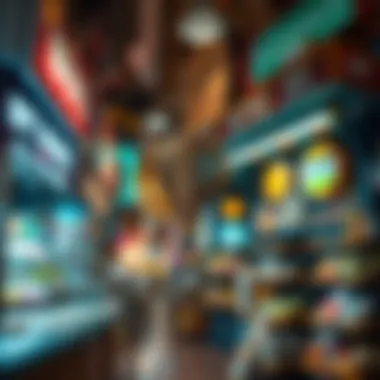
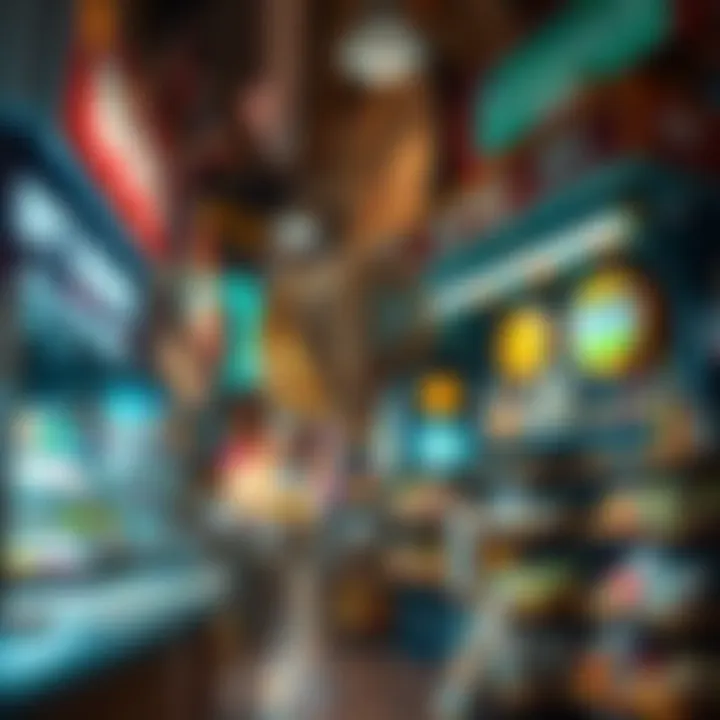
"Success in NFT marketplaces is akin to dancing on the digital stage; you must know your steps and your audience to truly shine."
For more insights into specific marketplaces, you may explore: OpenSea, Rarible, Foundation.
Legal Considerations in NFT Art
Navigating the world of NFT art isn’t just about pixels and digital canvases; it also involves a dense and often murky landscape of legal pitfalls and protections. Understanding the legal implications surrounding your creations is crucial for both artists and buyers. This section dives deep into copyright, smart contracts, and emerging regulations—elements that shape the legitimacy and future of NFT art in the digital realm.
Copyright and Intellectual Property Rights
One of the cornerstones of NFT art is copyright, which is the right to control the use of one’s creative work. Artists are often in a bind when it comes to NFTs, especially when they venture into unfamiliar territories of blockchain technology. The moment you create an artwork, copyright automatically belongs to you—however, the picture can get tricky when minting it as an NFT. What does this mean for artists?
- Ownership vs. License: Minting an NFT does not transfer copyright ownership unless explicitly stated. This means that while you can sell the NFT, you retain the copyright to the work unless you’ve sold that right.
- Originality and Derivative Works: If your NFT is based on someone else’s work, you might run into trouble. Make sure to have permissions or licenses to avoid infringing on someone else's copyright.
Artists must safeguard their rights constantly. It’s wise to include clear terms of use when selling your NFT. For instance, specify whether buyers can reproduce the artwork or if they simply own the token linked to it.
Smart Contracts and Their Implications
Smart contracts, those self-executing contracts with the terms of the agreement directly written into code, are foundational to the NFT ecosystem. They automate processes and ensure that conditions are met before action happens, minimizing the need for mediators. However, they come with significant implications.
- Automation of Royalties: Artists can program smart contracts to automatically collect royalties every time their artwork is resold. This could drastically change income flow for artists who often depend solely on initial sales.
- Irreversibility and Security: Once deployed, smart contracts are hard to modify. This makes it essential to ensure accuracy when you finalize your contract. Any code flaws might leave you vulnerable to exploitation.
Navigating smart contracts requires a careful balance of tech-savvy and legal knowledge—an understanding of both how the technology works and the law that surrounds its operation.
Challenges and Future of Regulations
As NFT art continues to expand, so does the legal landscape that governs it. Artists and buyers alike face a rapidly evolving set of rules and guidelines, with several challenges on the horizon.
- Teritorial Variations: Legal frameworks differ vastly from one country to another. This becomes increasingly problematic as NFTs are purchased and sold globally. One authoritative viewpoint may not apply universally.
- Regulatory Bodies Attention: There’s a growing interest from governments and regulatory bodies to impose taxes and monitor transactions involving NFTs. For instance, sales might be taxed like traditional art, creating complications for artists and buyers who aren’t tracking sales.
In summary, while creating NFT art offers exciting opportunities to generate income and reach audiences, it's equally important to comprehend the legal environment. It takes diligence, awareness, and often legal guidance to navigate this space successfully. The future of NFT art remains bright but intertwined with the ever-changing landscape of legal regulation.
"Regulating NFTs is like trying to catch smoke with your bare hands; it's elusive, often confusing, but absolutely critical in protecting artists and their rights."
For further reading, consider exploring resources from WIPO, Harvard Law Review, or articles on reddit.com regarding NFT regulations and copyright debates.
The Future of NFT Art
As we tread deeper into the realms of the digital landscape, understanding the future of NFT art becomes crucial not just for artists but for collectors, investors, and all stakeholders involved. With rapid technological advancements and changing perceptions around ownership and creativity, the future holds a plethora of opportunities and challenges.
Emerging Trends in Art and Technology
The digital art scene is seeing an array of trends that reflect technological evolution. One significant development is the integration of augmented reality (AR) and virtual reality (VR) in NFT creation. Artists now have avenues to produce interactive works that allow audiences to engage in vibrant experiences. Consider the example of using AR to view 3D sculptures in your own living room—instead of viewing a flat JPEG on a screen, you can witness the art as it interacts with your space. This immersion not only adds depth to art but also transforms how we perceive ownership; owning an NFT could mean having a unique moment or experience tied to the digital realm.
Additionally, generative art is carving its niche. Algorithms designed by artists produce art based on varying parameters, making each piece a unique creation in its own right. This method paves the way for artists to explore endless creativity without being tethered to traditional methods. Furthermore, blockchain technologies are improving, leading to more effective methods for artists to secure their work while retaining royalty rights in subsequent sales, thereby making art economically sustainable.
Impact of NFTs on Traditional Art Markets
The emergence of NFTs isn't just a side-game; it is reshaping how we view art in traditional galleries and auction houses. Those involved in sectors of high-end art are beginning to accept digital works, challenging the age-old norms that distinguished physical art from digital representations. This shift does not come without its problems; traditionalists might argue that digital art lacks the emotional resonance of a hand-crafted piece, yet the liquidity and accessibility of NFT markets present lucrative options that can entice new collectors.
Moreover, online platforms are altering the narrative in art ownership. A collector no longer needs to visit a gallery physically but can explore a rich variety of artwork online, making purchases in a few clicks. This democratization also benefits marginalized artists who might struggle to find a foothold in conventional gallery spaces. The power of the blockchain provides assurances of provenance, adding a transparent layer to art transactions that legacy systems often lack.
Predictions for NFT Adoption
Delving into the future, experts predict that the use of NFTs will spread across diverse sectors beyond just art. Music, real estate, and even gaming are increasingly adopting NFTs as a means of representing digital assets. In music, for instance, artists like Kings of Leon have already begun releasing albums as NFTs, offering fans a unique experience while simultaneously providing the artist with a more substantial revenue stream.
For investors, the expectation is robust. As people become more familiar with the mechanics of blockchain and the value of digital assets, more participants may enter the NFT space, potentially expanding the market exponentially. The way younger generations view art as an experience rather than just a collectible will propel NFT investments to new heights.
"The future belongs to those who prepare for it today." – Malcolm X
For more insights on digital ownership and NFTs in various sectors, you can check resources like Wikipedia, Britannica, and engage in conversations at Reddit.
Finale
In wrapping up this exploration of NFT art, it's crucial to grasp the myriad elements discussed throughout the article. As the world continues to shift towards digital, understanding NFT art isn't merely an academic exercise; it's a necessity for artists, investors, and educators alike. The importance of reflecting upon the NFT journey lies in its capacity to reshape our perceptions of art, ownership, and the digital landscape as a whole.
The benefits of engaging with NFT art extend far beyond the immediate financial gain. It's about pushing creative boundaries, exploring the intersection of technology and artistry, and becoming part of a community that values innovation. With every token minted and every piece shared, artists contribute to a growing narrative that challenges what we consider valuable and significant in the art world.
However, considerations abound. One must navigate legal implications surrounding copyright and intellectual property, grapple with the fluctuating dynamics of marketplaces, and stay informed about the ever-evolving technological landscape. This article aims to equip readers with the foundational knowledge necessary to traverse these waters wisely, allowing for a more enriching and informed experience in the digital art domain.
"NFTs represent a cultural movement, not just a financial opportunity."



